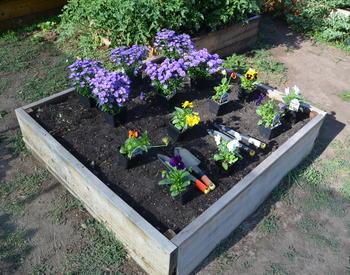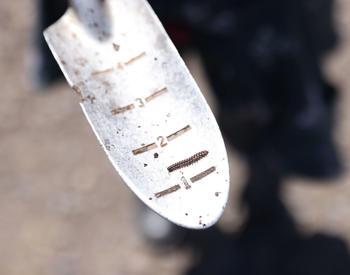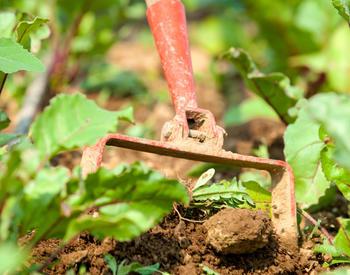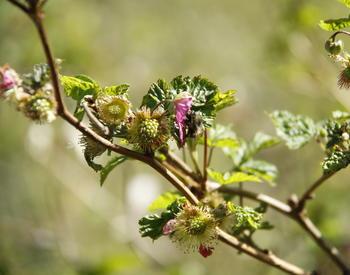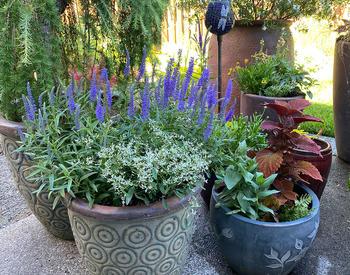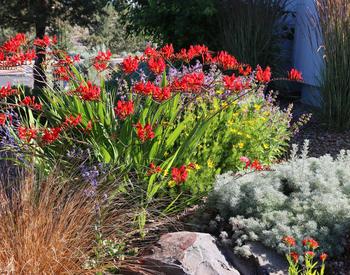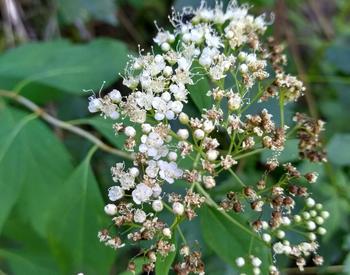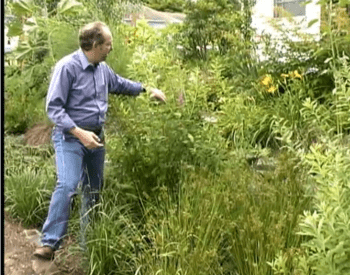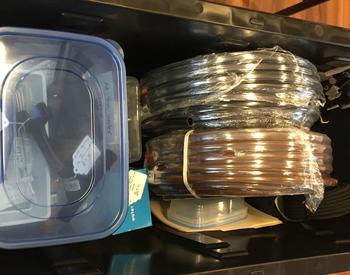When the days grow longer, a certain switch is triggered in the gardening gene. Gardeners can feel it switch on — starting with an itch to go outside and handle dirt, quickly escalating to the desire to put seeds in said dirt. The rush of gardening hormones can sometimes overwhelm messages from the brain, triggering a bout of Early Planting Syndrome (EPS).
EPS can be particularly dangerous in climates like that in the Klamath Basin: It can lead to plant failure and disappointment. EPS is a chronic problem among gardeners, and they have found all kinds of ways to work around the syndrome.
Horticulture and ag pros call it “season extension.” There are lots of season extension methods, from simple DIY row covers to structures that resemble greenhouses from the outside but are distinguished as “high tunnels” because they use passive rather than active heating.
Following are some of the season extension methods easiest to use in the home garden.
Indoor seed starting
Generally, smaller seeds and plants that do not develop taproots are the best candidates for this method. Larger seeds like pumpkin and cucumber are typically directly sown into the ground.
However, in especially short growing seasons like in the Klamath Basin, soil temps may not warm up early enough for longer-maturing plants to fully develop before winter frosts. In this case, planting even large-seeded plants indoors will have value. Supplemental lighting is usually necessary to prevent weak, leggy plants, and the young transplants should be “hardened off” before being left to fend for themselves over cold nights.
Cold frame
Essentially a wooden box with a glass or plastic top, the cold frame creates a mini-greenhouse effect and enables the gardener to safely plant seeds outside several weeks before would otherwise be possible. Cold frames are easily constructed from salvaged wood and windows. However, they work so well that the heat inside can cook tender young plants. Be prepared to lift and lower the glass lid multiple times per day and to design it so that the weight of that “lid” does not make lowering and lifting too cumbersome.
Cloche
This method dates back to Victorian times when wealthy gardeners could afford to put glass jars around individual plants to protect them from cold temperatures. Glass cloches are still incredibly expensive, but there are paper versions and the “water wall” method of water-filled plastic tubes that trap day heat around the plant and protect it from mild nighttime drops in temperature.
DIY spinoffs of this technique include filling multiple milk jugs with water and surrounding small plants with the jugs or including water-filled jugs inside cold frames or row covers for additional warmth. Research into the effectiveness of this technique is sparse, but it probably has some value in specific situations.
Row cover
Old sheets, pieces of plastic sheeting, sheer curtains — all of these thrift-store finds can be used to protect plants from temperature fluctuation early in the season. Like cold frames, row covers have to be removed from the plant — plants will still need light during the day and too much heat can build up under the cover. Clear plastic sheeting can let in light, but when moisture condenses on the underside of the plastic, that can contribute to other problems.
Low tunnel
A low tunnel is a bit of a cross between row covers and a high tunnel. This technique uses the benefits of a row cover and usually consists of a material that lets in light. Bent metal hoops, PVC supports or other materials hold the cover material away from the plant, reducing the moisture issue and providing room for the plant to grow. These are not always large enough for the gardener to get inside so you'll have to consider how you will get water to plants inside your low tunnel.
These five methods represent the easier and less expensive ways to get the jump on spring planting in the home garden. High tunnels are the premium season-extension device. They're more expensive but also easier to use and more adaptable to a variety of crops and situations than the other methods. High tunnels look like greenhouses from the outside but use passive heating rather than fuel to create an environment slightly warmer than the one outside.
In tough climates like that in the Klamath Basin, success with any of these methods requires watching and responding to weather and temperature changes. There can be a considerable amount of effort involved, and gardeners with EPS should consider carefully whether the extra effort is worthwhile. While not foolproof, season extension can be surprisingly effective.

